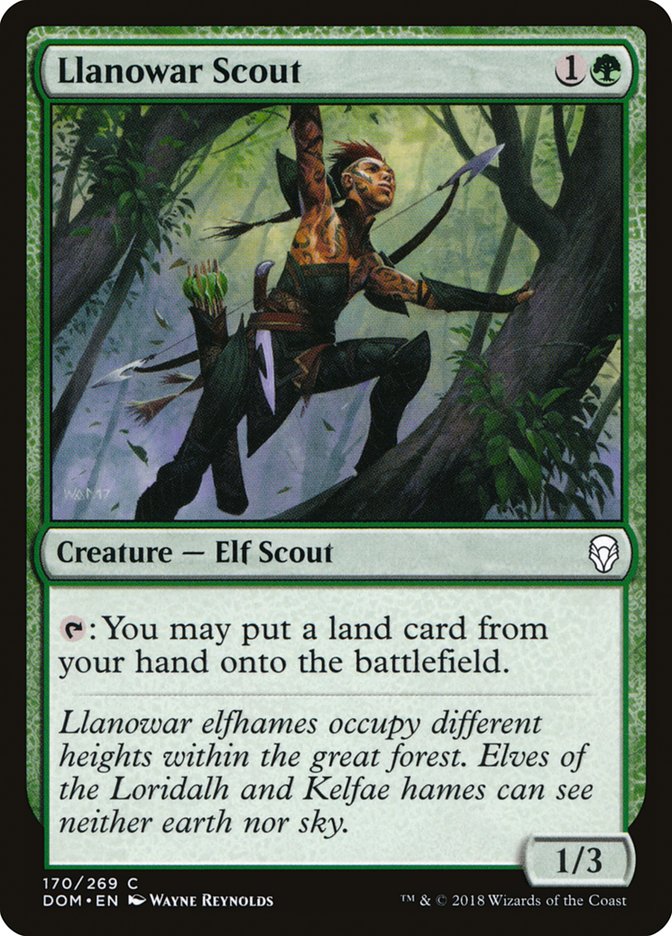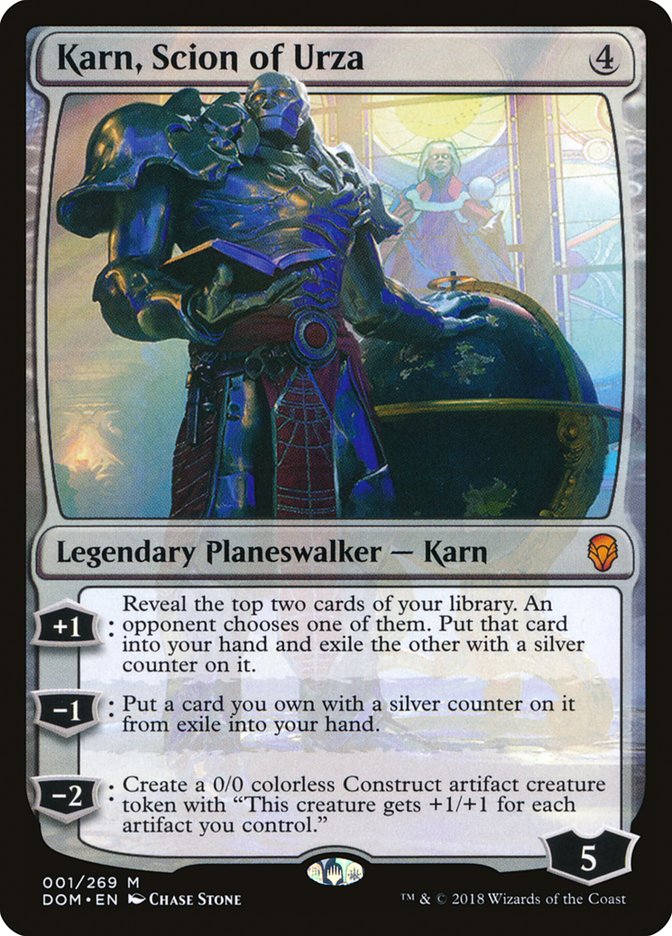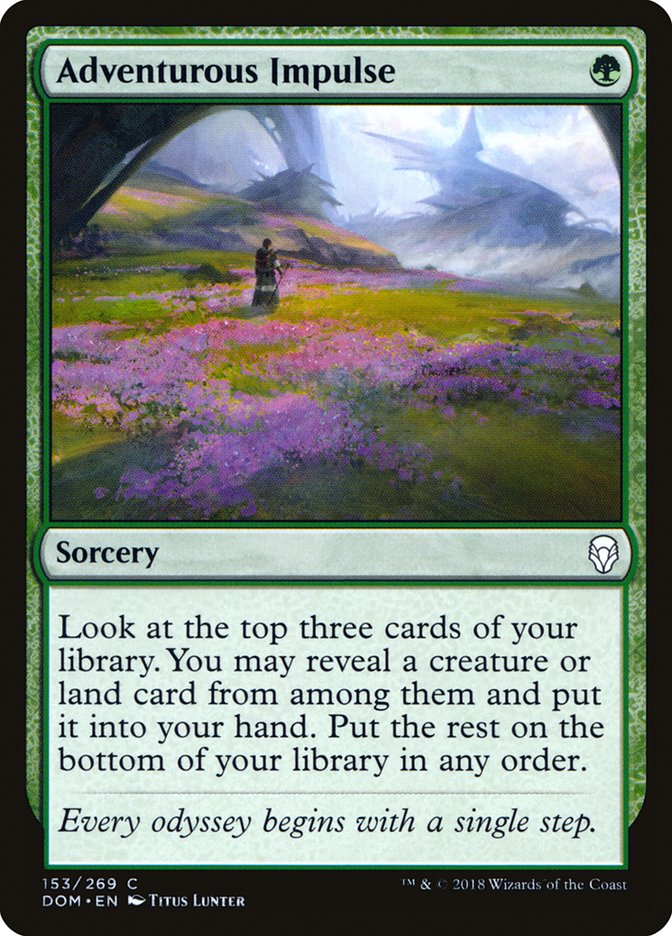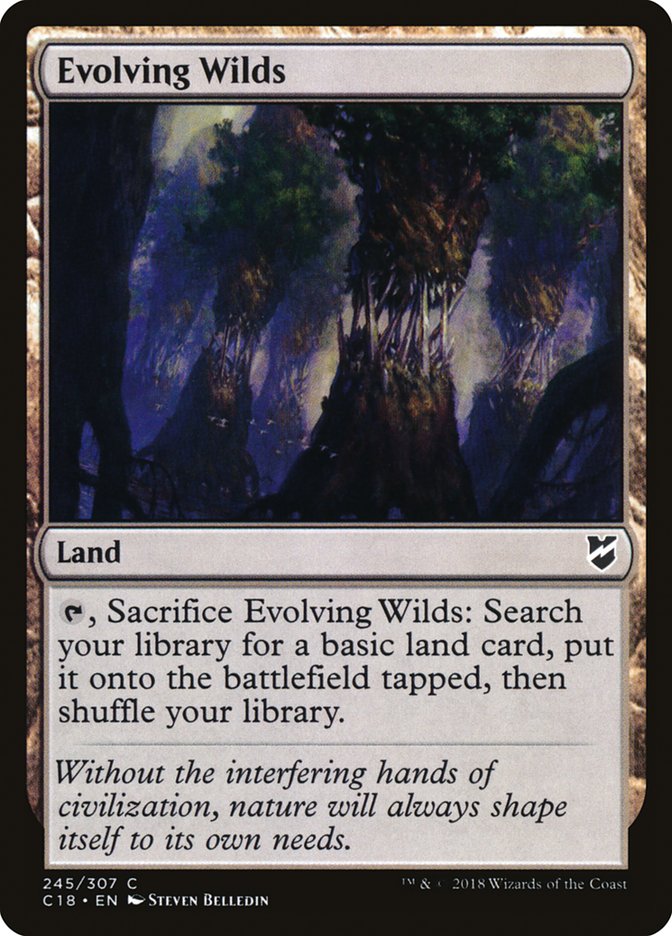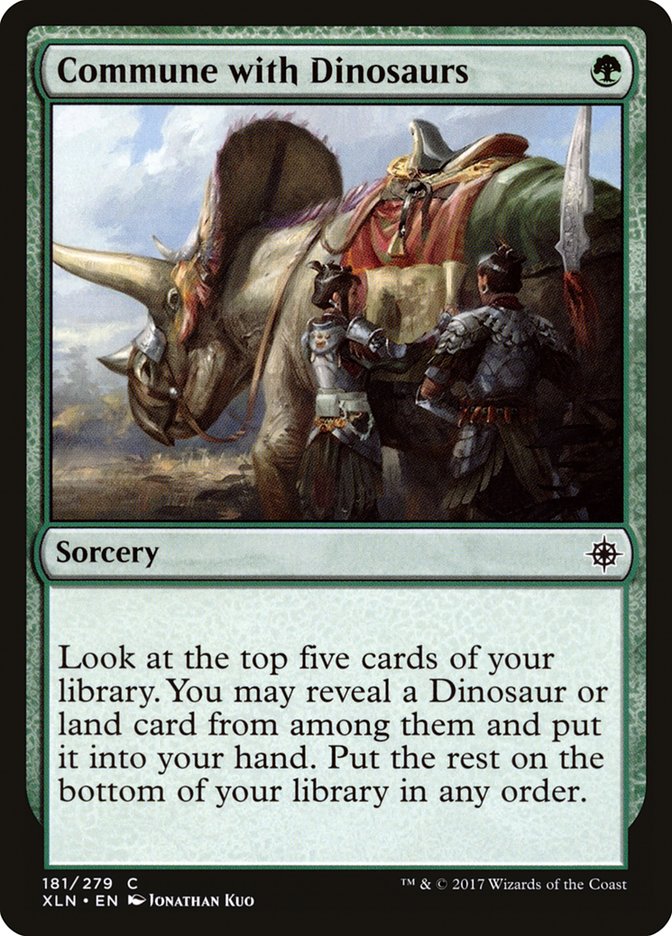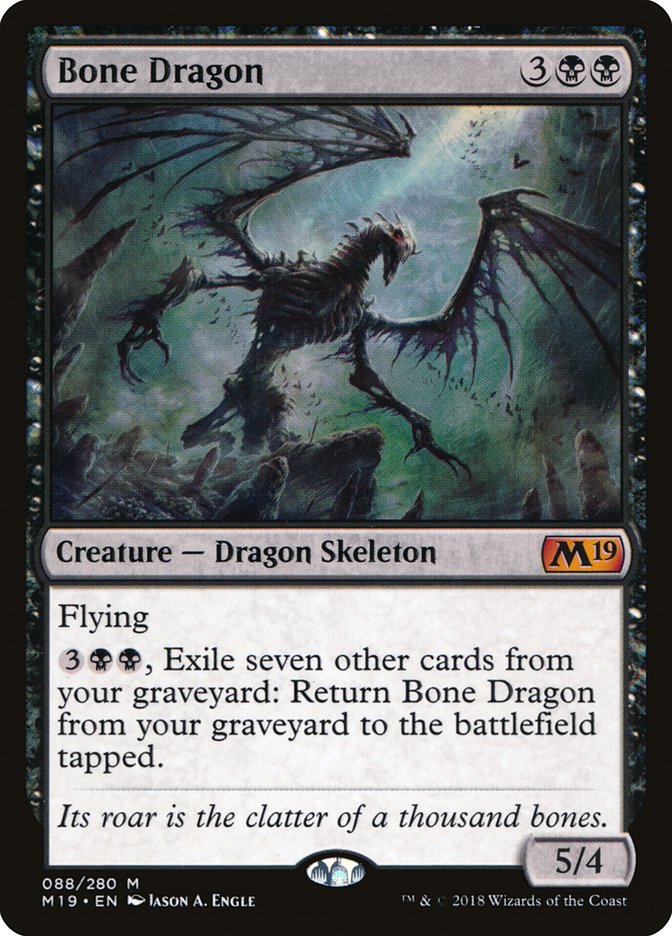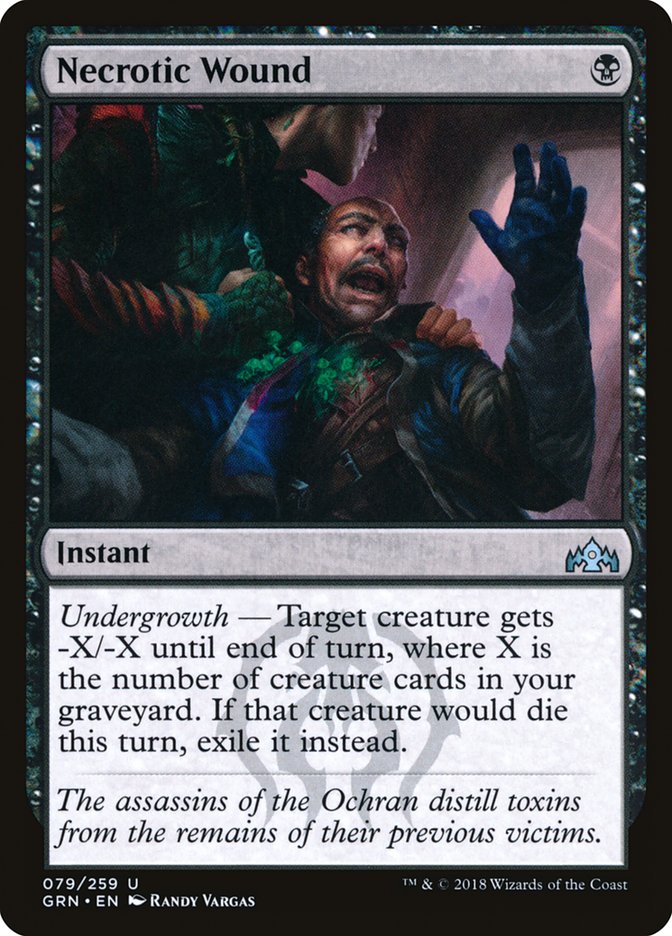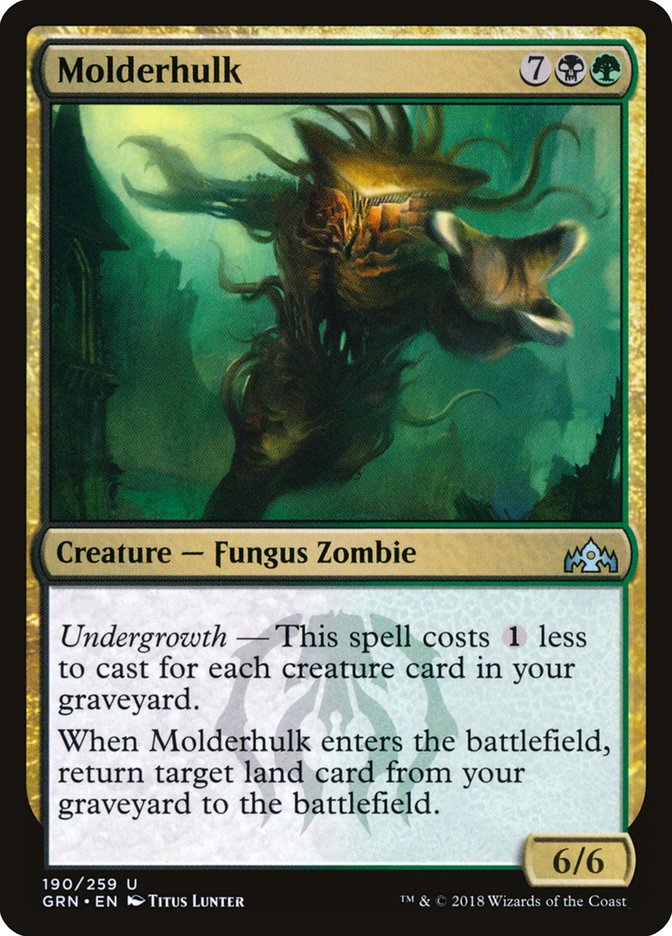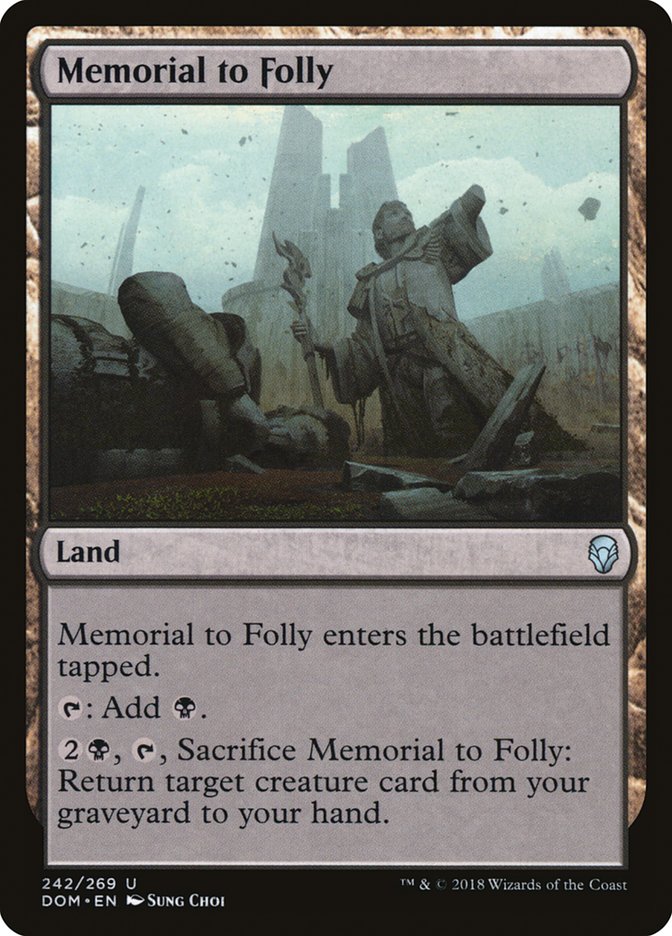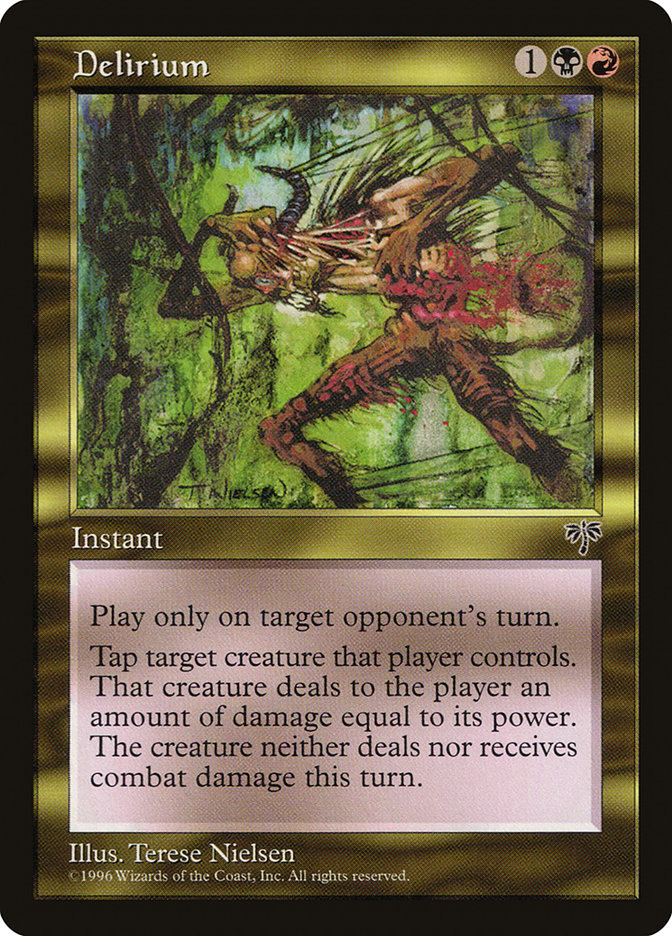Every Pro Tour, groups of pros work together to explore all the best decks
that can be built in a format. Ultimately, they each need to choose
something to play and teams often come to some kind of consensus, but the
day, or even hours before submitting their decklists, players are often
torn between several decks they think are close in power level. The choices
they make often end up shaping the format following the PT.
Also along the way, there are a lot of bad decks and failed experiments,
but sometimes there are ideas where it seems like something’s there, but
it’s just too hard to get it right and you can’t afford to spend the time
trying. Today I’m going to share the decks I worked on that I ultimately
didn’t end up registering. They’re a lot sweeter than what I’m playing
though.
Let me start with the weirdest deck and the weirdest story.
A few weeks ago I wrote about how I thought
getting a mana advantage on your opponent was a good way to get an
advantage in Standard
. One of the ways that I considered trying to do that was by using Llanowar
Scout to play additional lands. This is extremely powerful with Karn, Scion
of Urza, as it lets you play Karn on turn 3, and Karn has a tendency to
find additional lands, which you can play with Llanowar Scout.
Things get even better if you have a good six-mana play and enough lands to
play it on turn 4, but it’s not easy to do that because on turn 4 on the
play you’ve naturally only seen ten cards and you need six of them to be
lands. You also need Llanowar Scout and the six-drop, which means you only
have two other spells. This is a tall order. It becomes a lot more
realistic if you have cards like Karn or District Guide to help with
getting additional lands.
My first effort ended up looking like this:
Creatures (19)
- 2 Ravenous Chupacabra
- 1 Wayward Swordtooth
- 4 Llanowar Scout
- 1 Multani, Yavimaya's Avatar
- 3 Tatyova, Benthic Druid
- 4 Dryad Greenseeker
- 4 District Guide
Planeswalkers (6)
Lands (21)
Spells (14)

This deck was very bad.
It’s too slow. It falls behind and can’t really catch up, so it can’t
defend its planeswalkers and it just floods out. Tatyova doesn’t really
draw into anything.
I gave up on it pretty quickly.
At Grand Prix Atlanta, Quinn Kiefer told me he’d been messing around with a
deck with Wayward Swordtooth, Crucible of Worlds, Evolving Wilds, Memorial
to Folly, Stitcher’s Supplier, and Glowspore Shaman. I thought that was
pretty cool, because it solves the problem of running out of lands to play.
I didn’t have his exact list so I tried building my own. I built something
like:
Creatures (24)
- 2 Merfolk Branchwalker
- 4 Wayward Swordtooth
- 2 Llanowar Scout
- 1 Multani, Yavimaya's Avatar
- 4 Tatyova, Benthic Druid
- 4 Stitcher's Supplier
- 2 Molderhulk
- 4 Glowspore Shaman
- 1 Kraul Harpooner
Planeswalkers (2)
Lands (20)
Spells (14)
Sideboard

This deck was better, but still inconsistent. Ultimately, I think this deck
inspired two different decks. Following the Crucible of Worlds thread, I
felt like if I was going to go down this path, I really wanted to commit as
hard as I could to assembling specifically the combo of Evolving Wilds,
Crucible of Worlds, Tatyova, Benthic Druid, and Wayward Swordtooth.
I really wanted more Evolving Wilds, but there just aren’t more, but there
are Adventurer’s Impulse and Commune with Dinosaurs, both of which can also
find Wayward Swordtooth and they help with letting you find a lot of lands
to play if you don’t have Crucible of Worlds while also letting you find
your threats.
If I can find Evolving Wilds with these, I didn’t need to mill myself,
because a single Evolving Wilds lets you play as many lands as you need
with Crucible of Worlds. At that point, the only black card I really wanted
was Memorial to Folly, which lead me to this deck, where I was “splashing
for my manabase.”
Creatures (18)
- 2 Carnage Tyrant
- 4 Wayward Swordtooth
- 4 Llanowar Scout
- 1 Multani, Yavimaya's Avatar
- 4 Tatyova, Benthic Druid
- 3 Kraul Harpooner
Lands (19)
Spells (23)

I gave up pretty quickly. One of the big problems is that I can commit
heavily to finding these cards together, but Crucible of Worlds is the most
important one, and I had no way to make sure I found that. Maybe you’re
supposed to use Discovery, but that’s really slow. Maybe it’s okay if you
have more sweepers? Hard to say, but I decided this probably wasn’t the
right way to go in the format and moved on.
Anyway, a few days later, someone informed us that Ben Friedman had been
telling people that he’d been made aware of a leaked team CFB decklist that
included Dryad Greenseeker, Tatyova, Benthic Druid, Wayward Swordtooth,
Sticher’s Supplier, and Bone Dragon. We were really confused, because as
far as we could remember, only Quinn and I had explored this at all, and
while we’d discussed it, neither of us believed we’d ever actually put Bone
Dragon in a list.
We also had no idea where this could have come from, as neither of us
posted it anywhere, and we both played minimally with decks like this. Then
Quinn remembered that he sent a partial screenshot of a game he was playing
on Magic Online where his opponent won with no time on their clock or
something where you could barely see the names of the creatures he had on
the battlefield at the bottom of the cropped image that included most of
those cards to a group chat of some kind that he was in.
I guess a deck Quinn had messed around with on his own somehow became a
leaked team deck through some weird game of telephone once someone decided
to spread it around. I don’t know, people get weird before a PT.
Anyway, our team thought it was hilarious.
I mentioned that the Sultai build kind of went off in two directions. The
other was the takeaway that, while Crucible of Worlds probably doesn’t
quite work, Necrotic Wound is fantastic if you’re willing to play some
enablers to set it up. Exiling a creature for a single mana is just a
busted thing to be able to do.
Probably the deck that I had the best experience with relative to how
unconventional it was was a Golgari deck that tried to push this, which I
actually had a winning record with, including a five-win run on Arena.
(Look, I’m not saying that’s impressive, I just build a lot of really bad
decks so it’s interesting when something works at all.)
Creatures (26)
- 4 Llanowar Elves
- 2 Wildgrowth Walker
- 4 Merfolk Branchwalker
- 1 Thrashing Brontodon
- 4 Jadelight Ranger
- 1 Ravenous Chupacabra
- 4 Stitcher's Supplier
- 2 Molderhulk
- 2 Midnight Reaper
- 2 Kraul Harpooner
Planeswalkers (7)
Lands (14)
Spells (13)

The idea here was that the planeswalkers draw additional cards, which give
you more things to spend mana on, which means they’re best if you have a
lot of cheap spells so that you can actually use the cards you draw. Also,
planeswalkers are best when you’re ahead on the battlefield so they play
well with a low curve. The planeswalkers are also all great. Necrotic Wound
is also great and is ideal for protecting planeswalkers as long as you can
make it work. The concessions to make it work don’t cost that much if you
want a low curve anyway, and they also let you use Molderhulk, which is
relatively powerful with Memorial to Folly.
When I tried this, I happened to play against a lot of control decks, and I
discovered that I could just cleanly side out both the Stitcher’s Suppliers
and the Necrotic Wounds, and having a deck with cheap three-power creatures
would force my opponent to tap out. Then I could resolve a planeswalker,
which would win the game. Duress was also great with this plan.
When I played, I actually had Glowspore Shaman and I didn’t have Merfolk
Branchwalker or Wildgrowth Walker, but I lost to Mono-Red and decided I’d
need to play those cards and see if the graveyard stuff still worked,
because the deck just wasn’t good enough without access to a way to gain
life.
I think there might actually be something to this strategy and that this
deck isn’t far off. Necrotic Wound is great. It’s possible you’re supposed
to play even more creatures and fewer planeswalkers, but I did really like
the planeswalkers.
My enthusiasm about Necrotic Wound led to another deck, originally inspired
by a desire to play Necrotic Wound with Mission Briefing, since I just
wanted to cast it more, but ultimately, Mission Briefing didn’t make the
cut:
Creatures (20)
- 4 Siren Stormtamer
- 4 Kitesail Freebooter
- 2 Warkite Marauder
- 2 Nightveil Predator
- 4 Thief of Sanity
- 4 Pilfering Imp
Lands (14)
Spells (26)

This was another failed experiment. The creatures just don’t hit hard
enough to end the game and your lategame isn’t powerful enough. There’s not
much to see here. Stick with Mono-Blue Aggro.
Some people on our team were working on a “Big Red” deck that I somehow
convinced them to call Brunch, at least for the time being, by telling them
about rhyming slang;
they started calling the deck “Gum” because Big Red is a type of gum. I
told them they should go deeper. This name doesn’t follow the rules of
rhyming slang, which it’s still really hard for me to think about properly
to invent, but it’s comes from an adjacent line of thinking – Big Red is a
cinnamon gum – cinnamon in Cinnamon Toast Crunch, Crunch rhymes with
Brunch, therefore, Big Red is Brunch.
“I don’t know, people get weird before a PT.”
Anyway, Siege-Gang Commander was a big part of the Brunch strategy, as it’s
a very good way for a slower red deck to compete with Adanto Vanguard, as
it just becomes too expensive to attack with. Being impressed with
Siege-Gang Commander and Aurelia, Exemplar of Justice, Andrew Baeckstrom
decided to explore a Boros strategy that used Militia Bugler to find those
cards. He abandoned the deck, but I really wonder if there’s something
there:
Creatures (27)
- 4 Siege-Gang Commander
- 4 Adanto Vanguard
- 4 Dire Fleet Daredevil
- 4 Knight of Grace
- 4 Militia Bugler
- 3 Legion Warboss
- 4 Aurelia, Exemplar of Justice
Lands (9)
Spells (24)

I didn’t actually play with this, but it looks pretty good to me, to be
honest, particularly if the format settles in a place with relatively
little mass removal.
Anyway, obviously most of the time was spent working on decks that have
already proven themselves, but if you’re looking for an unexplored or
overlooked deck after the Pro Tour, these are some things I looked at that
might not show up (some of them for very good reason).


